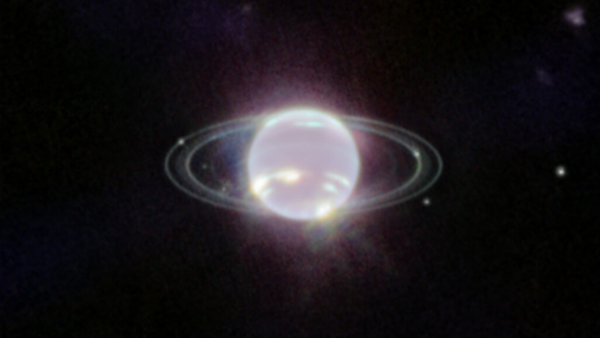Perhaps the most awe-inspiring spectacles in our solar system are the rings that circumnavigate certain planets. Even though Saturn is the first ringed planet that most people think of, it must now gird itself for competition, as a new contender is poised to dominate the news in the coming days!
The James Webb Space Telescope has once again released magnificent images of Uranus and its dramatic rings.

nting the Sun. Intriguingly, Uranus rotates on its side at an angle of nearly 90 degrees to its orbital plane. This results in many years of constant sunlight followed by an equal number of years of total darkness at its extremes.
Notably, the subtly enhanced brightening at the center of the polar cap is a feature that Webb has uncovered for the very first time due to NIRCam’s capacity to detect extended wavelengths.
Webb also captured many of the 27 known moons of Uranus. While the majority of them are too small and feeble to be seen, the six clearest ones are visible in the image below.

This stunning photograph shows 11 of this ice behemoth’ 13 rings. Nevertheless, some are so bright they look blended.
This expansive view of the Uranian system captured by Webb’s NIRCam instrument shows Uranus and six of its 27 known moons. Several peripheral objects, including numerous galaxies, are also visible. (NASA, ESA, CSA, STScI, J. DePasquale [STScI])
At visible wavelengths, Voyager 2 had photographed Uranus in 1986 as a featureless blue-green sphere. With its enhanced sensitivity and detection of infrared wavelengths, Webb has only recently captured the true majesty of this planet’s dynamic atmosphere and surrounding rings.
In future observations, scientists anticipate that Webb will cast more light on Uranus’ two feeble outer rings, which Hubble only discovered in 2007.

